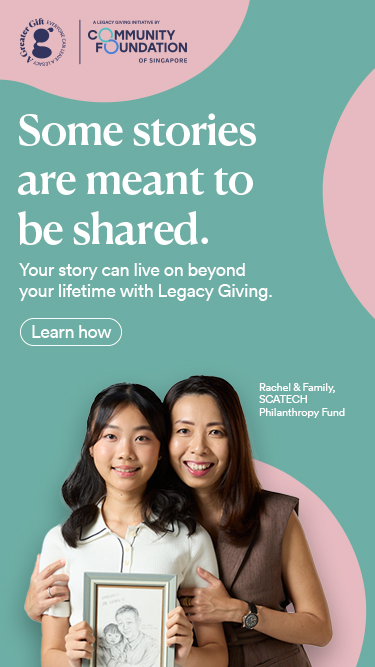BLLNR: How to donate time and money to a charity effectively


While the notion of giving is indeed widespread, it isn’t easy to commit to help those in need when you find yourself caught up in today’s ever-changing environment.
The Community Foundation of Singapore (CFS) is one such organisation that facilitates this line of work by bridging donors with causes of interest to develop programmes and provide grants to enrich lives. It values the 3 C’s to make giving better: connect donors with respective causes, collaborate with charities and commit to managing donor funds.]
One woman has managed to significantly grow the number of donor funds and volume of donations, paving the way for an effective philanthropy — Catherine Loh, the Chief Executive Officer of CFS, believes in the heart of giving. However, her arrival into the philanthropy space was not immediate but serendipitous.
While the notion of giving is indeed widespread, it isn’t easy to commit to help those in need when you find yourself caught up in today’s ever-changing environment.
The Community Foundation of Singapore (CFS) is one such organisation that facilitates this line of work by bridging donors with causes of interest to develop programmes and provide grants to enrich lives. It values the 3 C’s to make giving better: connect donors with respective causes, collaborate with charities and commit to managing donor funds.]
One woman has managed to significantly grow the number of donor funds and volume of donations, paving the way for an effective philanthropy — Catherine Loh, the Chief Executive Officer of CFS, believes in the heart of giving. However, her arrival into the philanthropy space was not immediate but serendipitous.
- Related Topics For You: CHARITY STORIES, DONOR STORIES, DONOR-ADVISED FUND, NEWS, STORIES OF IMPACT

.jpg)

